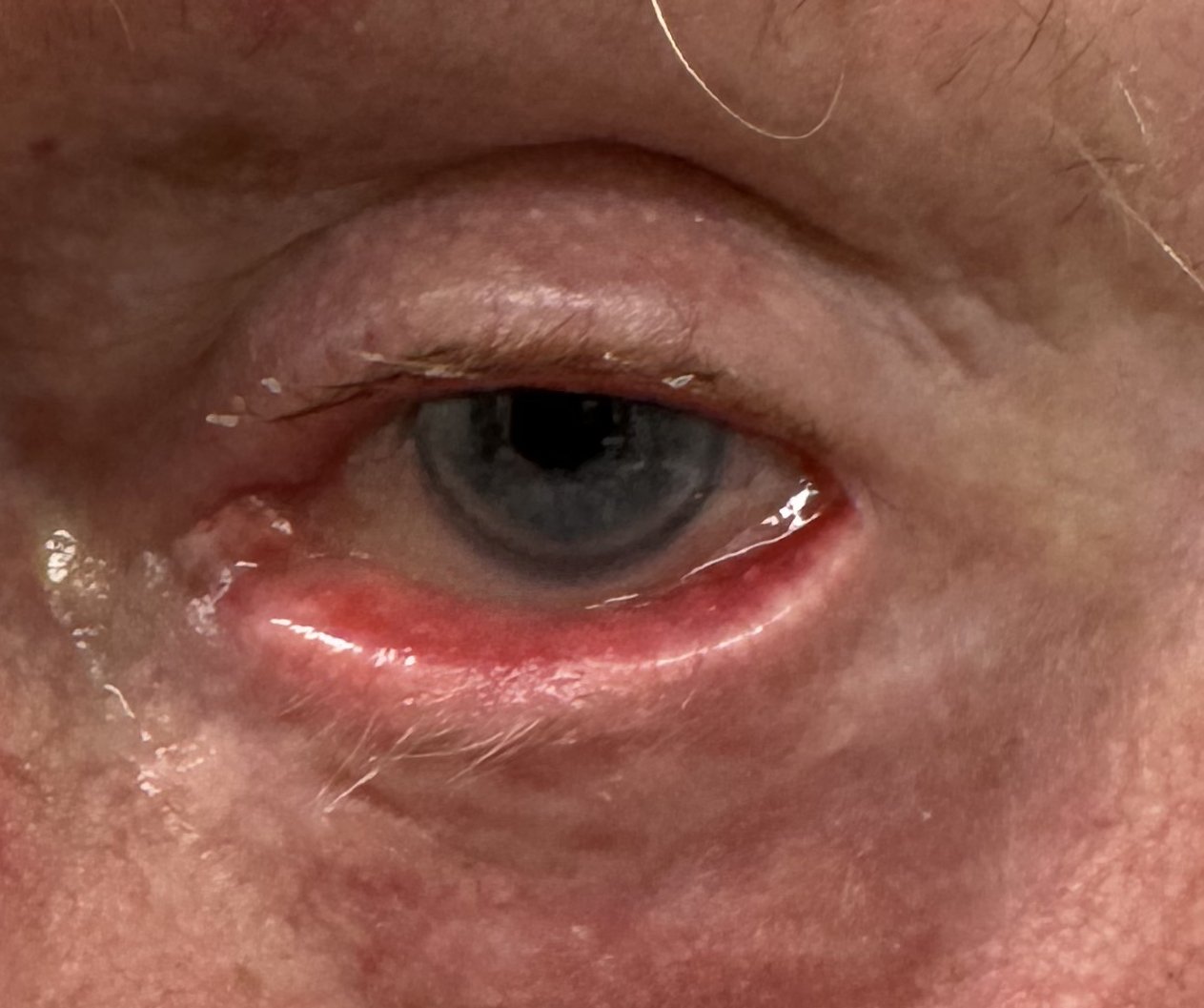Entropion & Ectropion
Entropion
What causes Entropion?
An entropion is a common eyelid condition where the eyelid rolls inward so the lashes rub on the eyeball. It tends to more commonly affect the lower rather than upper lids. It tends to be a condition related to ageing where the eyelid develops laxity and the retractor muscles dehisce (involutional or age related). Rarely an entropion can be caused by a shortage of the conjunctival tissue which lines the eyeball (Ciccatricial).
What symptoms/signs does Entropion cause?
Patients suffering from an entropion will often have an uncomfortable eye which may be watery and red. They may notice their eyelid rolling inwards and describe manually rolling it outward to relieve their discomfort.
What treatment is available for Entropion?
Treatment for this condition is surgical and is done with relative urgency as a prolonged entropion may cause damage to the cornea such as an ulcer or even a devastating infection. The surgery can be performed in my rooms for uninsured patients or a hospital. The surgery is performed with local anaesthetic and twilight anaesthesia in the hospital setting. My preference is to address both the eyelid laxity and retractor dehiscence to achieve the best results. Following your surgery a dressing patch will be placed on the eye for 1 night.
What is the recovery?
Sutures are generally removed at the post-operative visit at 1 week following surgery. From there building up of light duties over the next 4 weeks is recommended while the internal sutures dissolve and the wound stabilises and builds up strength. Antibiotic and steroid ointments are also used to modify the healing response if required. Patients are generally able to drive the following day after surgery.
What are the Risks?
The significant risks relevant to you will be discussed in detail at your consultation. General risks include recurrence of the entropion – approximately 5% failure rate.
Ectropion
What causes ectropion?
An ectropion refers to an eyelid which has turned out and can be caused by ageing changes in the eyelid as well as sun exposure and even excessive eye rubbing and sleep apnoea. Ectropions generally affect the lower eyelid and are classified into 5 main types:
Involutional: age related changes stretch tissues which loosens them and causes the eyelid to sag outwards like a heavy sheet
Ciccatricial: changes to the eyelid skin such as sun damage or eczema/dermatitis cause the skin to shorten and pull the lid outwards
Tarsal: loss of the eyelid retractor pull causes the eyelid to flip outwards exposing the conjunctival tissue not normally seen
Paralytic: caused by paralysis or damage to the facial nerve (CNVII)
Floppy eyelid: There is a strong association with obstructive sleep apnoea with similar changes seen to involutional ectropion
What are the signs/symptoms of ectropion?
Patients suffering from an entropion will often have an uncomfortable eye which may be watery and red. They may notice their eyelid rolling outwards and describe tears rolling down their face.
What is the treatment available for ectropion?
Treatment options depend on the type of ectropion and whether or not the patient is experiencing symptoms.
Mild ectropion, minimal symptoms: generally non-surgical treatments including eye lubricants.
Symptomatic ectropions: are addressed surgically and the type of procedure is determined by the ectropion present. The surgery can be performed in my rooms for uninsured patients or a hospital. The surgery is performed with local anaesthetic and twilight anaesthesia in the hospital setting. Following your surgery a dressing patch will be placed on the eye for 1 night.
Involutional ectropion: Surgery involves addressing the horizontal eyelid laxity with a canthoplasty and addressing any medial ectropion if present with a medial spindle procedure.
Tarsal ectropion: Surgery involves addressing the horizontal laxity together with the dehisced retractors.
Ciccatricial ectropion: Surgery involves lengthening the anterior lamella (eyelid skin) with a small skin graft or flap together with addressing horizontal laxity and any retractor dehiscence.
What is the recovery?
Sutures are generally removed at the post-operative visit at 1 week following surgery. From there building up of light duties over the next 4 weeks is recommended while the internal sutures dissolve and the wound stabilises and builds up strength. Antibiotic and steroid ointments are also used to modify the healing response if required. Patients are generally able to drive the following day after surgery.
What are the risks?
The significant risks relevant to you will be discussed in detail at your consultation. General risks include recurrence of the ectropion.



